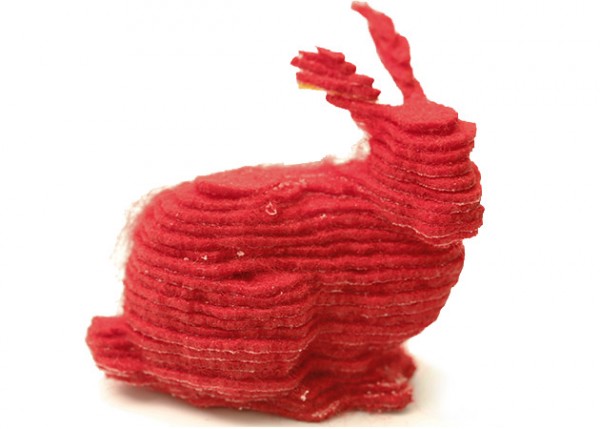Disney has been amusing us since our childhood. The Disney Research network takes care of the technological developments for The Walt Disney Company. The Disney Research shares its credits for creating Disney amusement parks, toys, retails, and several other fun objects. So far we have seen many innovations, introduction to new concepts, new machines and filaments in the 3D printing industry. But very recently Disney Research and Carnegie Mellon University invented a very interesting and at the same time unique kind of a 3D printing machine. This machine is designed in such a way that it can layer laser cut fabrics and create 3D objects. Within the 3D printed objects the team incorporated a circuitry system such that any electrical function can be incorporated.
“Today’s 3D printers can easily create custom metal, plastic, and rubber objects,” said Jim McCann, of Disney Research told, “But soft fabric objects, like plush toys, are still fabricated by hand. Layered fabric printing is one possible method to automate the production of this class of objects.”
The team conducting this operation consists of McCann, Huaishu Peng, a Ph. D. student at Cornell University and Scott Hudson and Jen Mankoff, both Carnegie Mellon faculty members.. This printer is unique in the sense that it uses laser cutting and then the adhesive process. It takes the designated position of the fabric roll (eg., center) and starts cutting the 2D outline of the different layers of object.Finally, after each layer is added together with a laser heating system to form a 3D object.
The fabric is fed from a fabric roll, and the vacuum holds the fabric against the upper cutting platform. Once each layer is complete a laser head (like nozzle end) cuts it from all the sides so that it can be completely separated from the fabric roll. Once the cutting is over the build plate is raised. After the vacuum stops and then fabric falls on the build plate. The platform levels down and then the adhesive process starts. The fabric layers are joined together with heat-sensitive adhesive. The two layers are joined together using heat and external pressure. Once the entire process is complete and the object is made, the extra material is peeled away, to get the final 3D object.
Image courtesy: Disneyresearch.com
